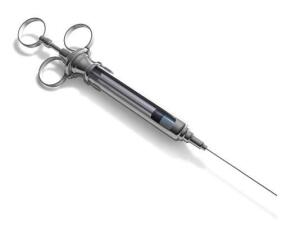This Month in Medical History - January: Insulin makes an impact
by
Sean Ruck, Contributing Editor | January 29, 2009

On January 11, 1922,
14-year-old Leonard
Thompson was the
first person to
ever be treated by
insulin injection
Diabetes affects about two million people worldwide according to the World Health Organization (WHO). Every year, six million new cases occur and it's predicted that there will be more than 350,000,000 people worldwide suffering from the disease by 2025.
Less than 100 years ago, being afflicted with Type 1 diabetes, which typically affects individuals under the age of 20, was a death sentence. If it was discovered quickly enough, Type 1 Diabetics could follow a strict diet to extend their lives - by about one year.
In 1869 German pathologist Paul Langerhans discovered a structure in the pancreas which would bear his name. The Islets of Langerhans, a group of cells found in the pancreas, release chemicals that help to regulate the blood sugar level of the body. Although the Islets release five types of cells, in 1916, English physiologist Edward Sharpey-Schafer was the first to theorize the existence of a pancreas hormone to reduce the blood glucose level.
Sharpey-Schafer named this hormone insulin. It was determined that the beta cells create insulin and their deterioration is what leads to Type I Diabetes.
Armed with this knowledge, researchers worked to isolate the cells to provide an outside source of insulin to the diabetic. It took more than five years to finally provide the solution. During the summer of 1921, Canadians Charles Best, a physiologist, and Dr. Frederick Banting successfully isolated and extracted insulin from canine test subjects which produced diabetic symptoms in those animals and then injected insulin back into those subjects to balance out their blood sugar. The discovery was announced on November 14th of that year and within two months preparations were being made to test insulin injections on a human subject.
John James Richard Macleod was Director of the Physiological Laboratory and Associate Dean of the Faculty of Medicine at the University of Toronto. He oversaw the trials and had also made contributions to diabetic research on his own. It was he who brought in James Bertram Collip to assist the assembled research team. Banting and Best had encountered difficulties in extracting a sufficiently pure form of insulin so Collip was put to that task.
On January 11, 1922, 14-year-old Leonard Thompson was the first person to ever be treated by insulin injection using insulin extracted from the pancreas of fetal calves taken from cattle being sent to the slaughterhouse. The first injections of insulin to humans were self-administered by Banting and Best to confirm that there would be no adverse reactions. The first treatment didn't have the purity needed and two weeks later a second treatment using Collip's extraction was administered and Thompson's symptoms quickly abated. With continual treatment he went on to live to the age of 27, dying from complications due to a motorcycle accident and Diabetes.
Following this successful trial, Banting, Best and Collip sold the patent for insulin to the University of Toronto for one dollar. The University in turn allowed pharmaceutical companies to begin producing insulin royalty free. By the following year insulin was readily accessible for many of those suffering from the disease.
As is the case with many major discoveries, there was some drama. Banting and MacLeod alone were awarded the 1923 Nobel Prize for Medicine. Banting was outraged as he felt MacLeod's contribution was merely the provision of work space. He contacted his colleague Best and went on to share his half of the recognition and prize money with him. MacLeod in turn, felt that Collip had been slighted and shared his half of the award.
Each of the men went on to have illustrious careers, making significant contributions to medical science. While a cure for diabetes has yet to be found, the work of these individuals and others have saved or extended thousands of lives over the past eight decades.
